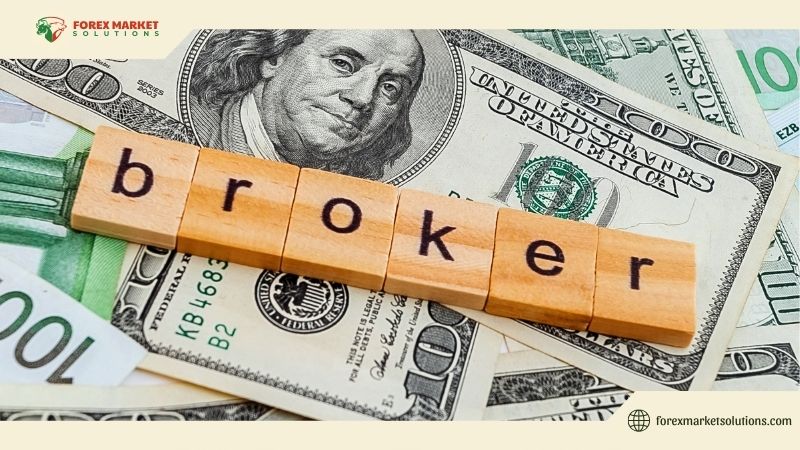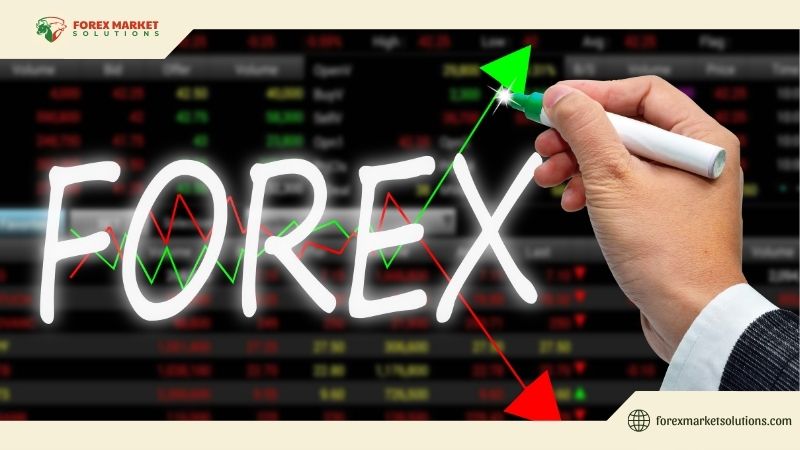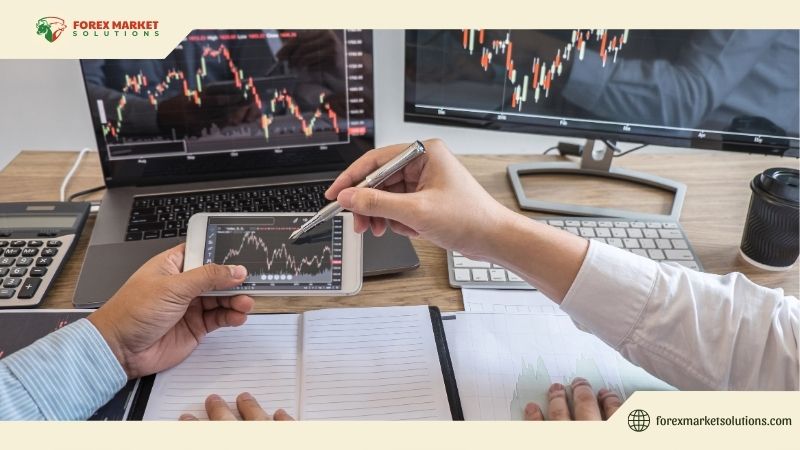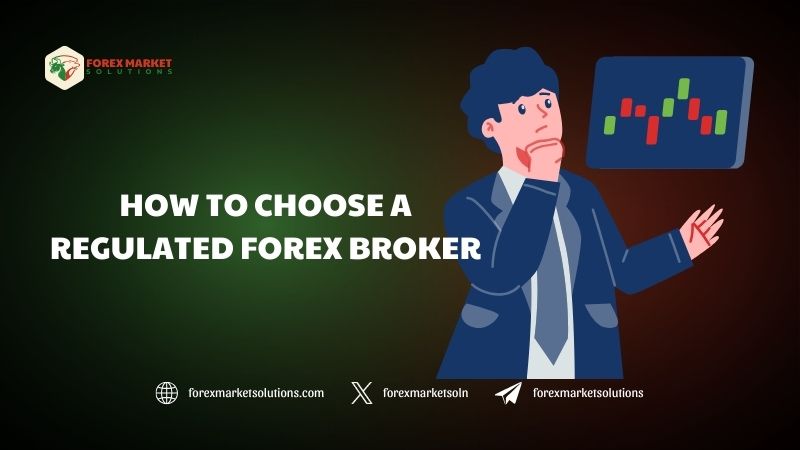Entering the world of Forex trading is an exciting step, but it comes with a critical decision: selecting the right broker. For newcomers and seasoned traders alike, understanding how to choose a regulated Forex broker is essential to ensure a safe and reliable trading experience. As of March 16, 2025, with the Forex market bustling with opportunities and risks, picking a broker backed by solid regulations can make all the difference. In this 1500-word guide, we’ll walk you through the process of how to choose a regulated Forex broker, breaking it down into clear, actionable steps to help you trade with confidence.

Why Knowing How to Choose a Regulated Forex Broker Matters
The Forex market operates globally, with trillions of dollars changing hands daily through a decentralized network. This vast scale attracts legitimate brokers and, unfortunately, some less scrupulous ones. Learning how to choose a regulated Forex broker protects you from scams, ensures your funds are secure, and provides a framework for fair trading. A regulated broker answers to an authority that enforces standards, giving you peace of mind as you navigate currency markets.
In the following sections, we’ll explore what regulation means, why it’s a non-negotiable factor, and the practical steps to identify a trustworthy broker. Whether you’re just starting out or reassessing your options, mastering how to choose a regulated Forex broker sets the stage for a successful trading journey.
Understanding Regulation in Forex Trading
Regulation in Forex isn’t just a buzzword—it’s a system of rules designed to keep the market honest and traders safe. A regulated broker operates under the oversight of a financial authority, which imposes requirements like maintaining sufficient capital, segregating client funds, and providing transparent pricing. For someone figuring out how to choose a regulated Forex broker, this oversight is your first line of defense against fraud or mismanagement.
Different countries have their own regulatory bodies, each with varying levels of strictness. In the United States, for instance, the Commodity Futures Trading Commission (CFTC) and the National Futures Association (NFA) set a high bar, while the UK’s Financial Conduct Authority (FCA) is equally respected. Knowing these basics helps demystify how to choose a regulated Forex broker, turning a potentially overwhelming task into a straightforward process.

Step-by-Step Process for How to Choose a Regulated Forex Broker
Verify Regulatory Status
The cornerstone of how to choose a regulated Forex broker is confirming their credentials. Start by checking if the broker is registered with a reputable authority. In the U.S., this means looking for CFTC and NFA membership—brokers like Forex.com and OANDA proudly display these affiliations. In the UK, FCA regulation is a gold standard, while Australia’s ASIC and Cyprus’s CySEC are also well-regarded. Most brokers list their regulatory status on their website, but don’t stop there. Visit the regulator’s official site and search their database to confirm the broker’s license is active and free of violations.
This verification step isn’t just about ticking a box—it’s about ensuring the broker meets strict standards. A regulated broker in the U.S., for example, must hold at least $20 million in capital, a requirement that filters out underfunded firms. Taking this time upfront is a key part of how to choose a regulated Forex broker that you can trust with your money.
Check Fund Protection Measures
A regulated broker’s commitment to safeguarding your funds is another critical factor in how to choose a regulated Forex broker. Look for brokers who segregate client money from their own operational funds. This means your deposits sit in a separate account, untouchable by the broker if they run into financial trouble. In the UK, FCA-regulated brokers also offer compensation schemes, like the Financial Services Compensation Scheme (FSCS), which can cover up to £85,000 if the broker fails. The U.S. doesn’t have a direct equivalent, but NFA rules ensure funds are held securely with reputable banks.
Ask the broker directly about their segregation policy or check their terms of service. This layer of protection is a practical aspect of how to choose a regulated Forex broker, giving you confidence that your capital isn’t at unnecessary risk.
Evaluate Trading Conditions
Regulation ensures safety, but trading conditions determine usability. When exploring how to choose a regulated Forex broker, consider spreads, fees, and execution speed. Tight spreads—like 0.5 pips on EUR/USD—keep costs low, especially if you trade frequently. Avoid brokers with hidden fees; regulated ones must disclose all charges upfront, from commissions to withdrawal costs. Fast execution is also vital—delays can cost you in a fast-moving market, so test their platform with a demo account to gauge performance.
A broker like IG, regulated by multiple authorities, pairs competitive conditions with reliability, making it a strong contender. Balancing these factors with regulation refines how to choose a regulated Forex broker that fits your trading style.
Assess Platform and Tools
The trading platform is your gateway to the market, so it’s a big piece of how to choose a regulated Forex broker. Most regulated brokers offer MetaTrader 4 or 5—platforms known for their ease of use and robust features like charting and automation. Test the platform’s interface with a demo account to see if it feels intuitive. Look for extras like educational resources or mobile apps, which can help you learn as you go. A broker regulated by the FCA or ASIC, for instance, might also provide webinars or market analysis, adding value for beginners.
This step ensures the broker’s tools align with your needs, making how to choose a regulated Forex broker a blend of safety and practicality.
Investigate Customer Support
Even with regulation, you’ll need help sometimes. A broker’s support quality is a subtle but important part of how to choose a regulated Forex broker. Check if they offer 24/5 assistance—matching Forex market hours—via live chat, phone, or email. Test their responsiveness by asking a simple question before signing up. Regulated brokers like XM, overseen by CySEC and ASIC, often emphasize multilingual support, a boon if English isn’t your first language.
Reliable support means you’re not left stranded during a technical glitch or market crisis, reinforcing how to choose a regulated Forex broker you can depend on.

Comparing Regulated vs. Unregulated Brokers
The temptation to skip regulation can arise—unregulated offshore brokers often advertise sky-high leverage or no fees. But the risks outweigh the perks. Without oversight, there’s no guarantee your funds are safe or that trades are executed fairly. A regulated broker, while sometimes stricter (like U.S. leverage caps at 50:1), offers accountability. Understanding how to choose a regulated Forex broker means prioritizing security over flashy promises, especially as a beginner.
Red Flags to Watch For
Even among regulated brokers, not all are equal. Be wary of those pushing aggressive sales tactics or guaranteeing profits—regulation doesn’t permit such claims. Check their disciplinary history on the regulator’s site; a pattern of fines or warnings is a red flag. This vigilance is a practical extension of how to choose a regulated Forex broker, ensuring you avoid trouble even within the regulated space.

The Global Regulatory Landscape
Regulation varies by region, affecting your choice. The U.S. enforces tight rules like no hedging, while Europe allows more flexibility under ESMA. Australia’s ASIC balances protection with competitive conditions, and CySEC in Cyprus is lighter but still credible. Knowing these differences fine-tunes how to choose a regulated Forex broker, letting you pick a jurisdiction that suits your goals.
Testing Your Choice with a Demo Account
Before committing real money, use a demo account to trial your shortlisted brokers. Trade as you would live—test spreads, platform speed, and support response. This hands-on approach confirms your pick aligns with how to choose a regulated Forex broker, bridging theory and practice.
The Future of Forex Regulation in 2025
As of March 16, 2025, Forex regulation is adapting to new trends. Cybersecurity rules are tightening to protect against hacks, and regulators are eyeing crypto-Forex pairs for clearer guidelines. Staying informed about these shifts enhances how to choose a regulated Forex broker, keeping you ahead in a changing market.
Figuring out how to choose a regulated Forex broker is your foundation for a secure and rewarding trading experience. By verifying regulation, checking fund safety, and weighing trading conditions, you can select a broker that protects your interests and supports your growth. In 2025’s bustling Forex market, this knowledge is your edge—use it to trade with assurance.
Want more tips on brokers and trading? Visit Forex Market Solutions for expert advice, reviews, and updates on how to choose a regulated Forex broker. Follow our website today and take your trading to the next level!
